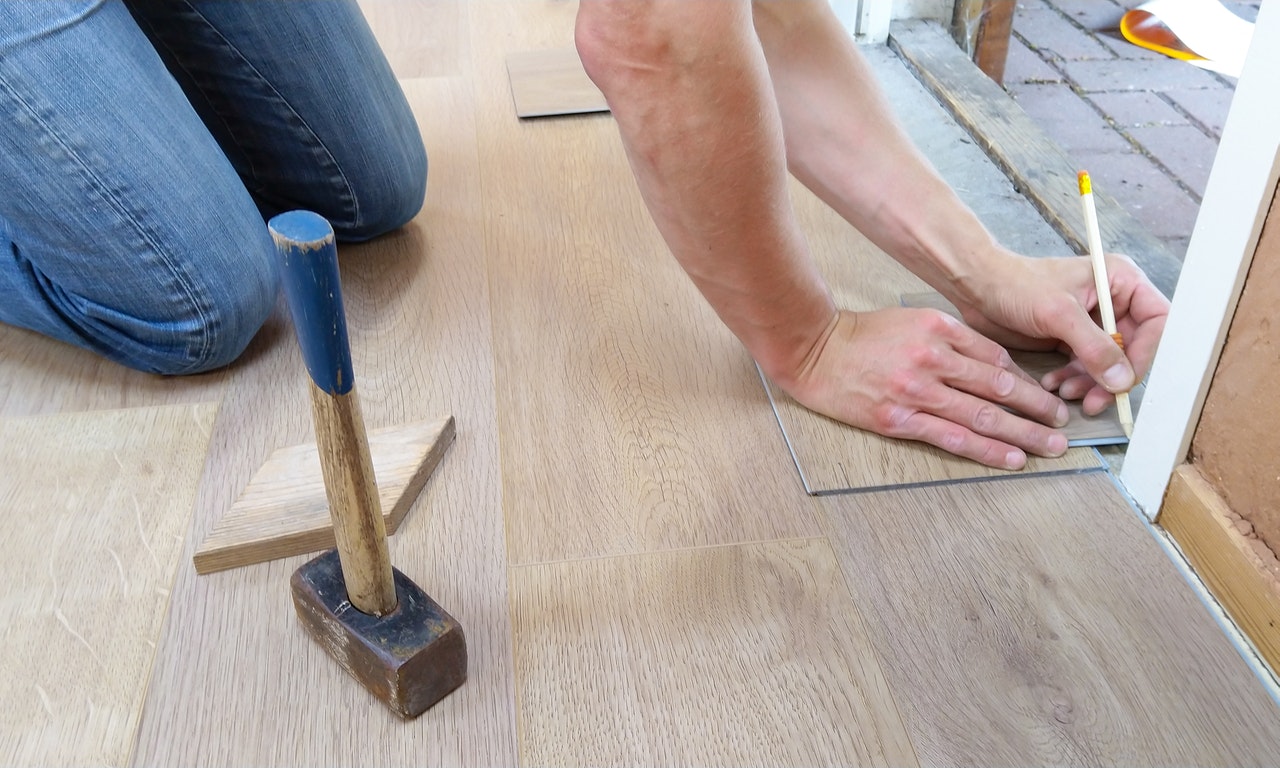There are different methods or ways of installing traditional solid hardwood floors. The method applied also depends on the type of wood flooring you opt for, the quality of the sub floor, budget, style, skill set of the installation experts, and others. Just to give you a perspective, traditional solid wood flooring is nailed down while engineered wood flooring is generally glued down or installed using the click-lock mechanism. Today we are going to discuss the main methods or types of flooring installation and how to install using each of the methods.
There are three common ways of installing flooring solutions namely, glue-down, or adhesive, click-lock or floating, and nail-down installation. Today we will focus on the easier options which are - click-lock or floating & glue-down or adhesive based. Let us understand each of these methods in detail.
Glue-Down or Adhesive based InstallationThe glue-down or adhesive flooring installation is a popular method and is considered a great choice for concrete floors. The flooring boards or planks are generally locked in together by using a strong glue. It is one of the most cost effective and economical ways of installation as it does not require an additional moisture barrier. Let us look into the main steps involved while applying this method of wood flooring installation.
Once the floor is prepped, using a trowel spread the flooring adhesive and make sure to use enough quantity to work a few rows at once.
Typically, the glue will take about 60 minutes to set in
Spread the glue to smaller areas by using your trowel at 45-degree angle
Now, lay the first row and install it at the starting line
Make sure to cut the last board to leave an expansion gap of 3/4-inch
When beginning the second row, place the groove onto the 1st row's tongue and fix it using a rubber mallet
Use spacers for maintaining the expansion gap and use the rubber mallet to tap on any rows which are inconsistent
Next cut the flooring boards to width and start placing them
Install the shoe moulding and baseboard to cover the expansion gap
Complete it by installing transition strips for the floor edges which are exposed
Click-Lock or Floating InstallationThis is one of the most famous choices as it allows you to do your first ever DIY project. Click lock or floating method is one of easiest and quickest methods and requires no additional skill set or labour costs even if you opt for solid oak flooring as the base. Let us understand how click lock system functions.
Apply 1/2-inch spacers to maintain the expansion gap between the first row and the boundary wall
Place the 1st board up against the center line with the groove facing away from the wall
Use the 1/2-inch spacer against the walls and push the board up against the spacer
Now as per the manufacturer's guide drill in the holes and then use the flooring nails to countersink all nails
Next, place the upper drop-click end of the second board on the lower drop-lock end of the first board. Make sure to follow a straight edge alongside the row
Then, cut the last flooring board to fit in but leave a 3/4-inch expansion gap
Install the remaining flooring rows
Chunk a section of the 1st flooring board to make sure that joints are 6 inches apart
With the tongue facing the last low, hold the board at about 30-degree angle
Maintain even pressure when pressing the flooring board flat to lock the edges
Using the tapping block and plastic mallet get rid if any gaps along the edges
The next steps are similar to that of glue-down or adhesive installation
Cut the final row to width and make sure to leave a 3/4-inch expansion gap
Install the shoe moulding and baseboard to cover the expansion gap
Complete it by installing transition strips for the floor edges which are exposed
Also read about:
9 Reasons to Purchase refurbished laptops from nearby computer shop
The most effective method to be a Better Listener in Your Relationship
Improve Your Relationships in Two Minutes

